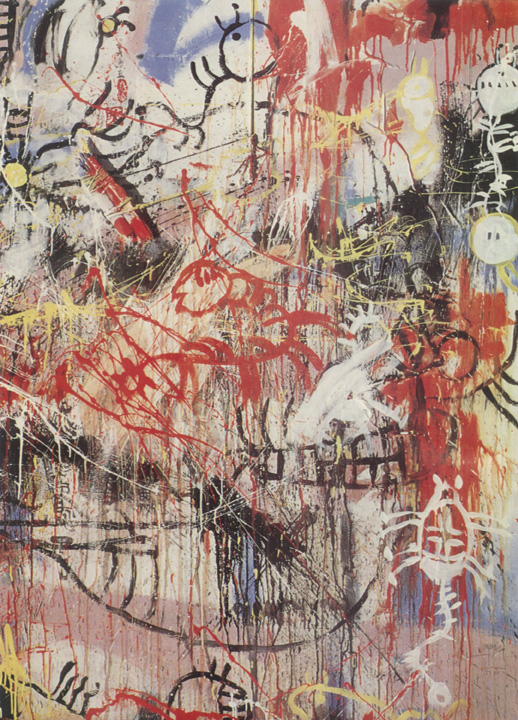 "Transition Period" by Carlos Marreiros Diptych (left panel); mixed media; 122cm x 200cm
"Transition Period" by Carlos Marreiros Diptych (left panel); mixed media; 122cm x 200cm
"The best display of foreign painting in the last decade." These were the words of Prof, Lou Kang, a former teacher in the College of Fine Arts in Shanghai and now mentor to the artists of Singapore, where he now lives. He was discussing "Macau Contemporary Artists", the joint exhibition mounted by six painters from Macau who have joined together under the title of the "Circle of the Friends of Culture"
It is popularly believed that fame is often recognised abroad, but never at home, that it takes an outsider to appreciate talent. All too often, "culture" is reduced to "cultural activity", thereby becoming a superficial, bureaucratic notion of what the bureaucrats consider culture to be It consequently becomes increasingly difficult to define Macau's genuine identity, to distinguish those people who are truly contributing to the city's real image.
While Macau asserts her individuality out of this mixing of cultures, it is also here that the differences in values and concepts manages to by-pass the language barrier and results in a singularly fruitful exchange.
The "Circle of the Friends of Culture" has brought together some of the foremost artists in the territory, artists who have absorbed the international language of modern art. They are Macau's vanguard. Not that this is their manifesto. It is rather a situation which transcends their own position in startling contrast to the general backdrop, which functions in accordance with delays resulting from corresponding time barriers, a backdrop dominated by peony-painters copying the same themes of centuries past, merely wrapping-paper for supermarket florists. The only variations are to be seen in the same, dated captions, without a shadow of a difference.
"The language of art dictates that in our case a painting must include the values of the cultures which coexist in this territory. It must reflect the same harmony as the base culture. It is a tremendously challenging and difficult task to achieve the fusion of both Chinese and Portuguese cultural facets in painting, without making them appear too conventional. Much searching-out of concepts must be done before anything can take shape and colour on the canvas."
This is what makes these painters genuinely Macanese -not in the sense of a reductive "regional" interpretation which would reduce their status and that of their work, but in the sense of trying to integrate what is genuinely specific to Macau into a univeral setting and using that experience as a voyage of discovery and self-realisation. Thus we can see an identity, based on social and cultural facets of the past, enjoying a revived syntheses. On a more visual level we may see a more recent past which is less easily evoked, of the artistic experiences of these painters. This technical interplay is still, however, difficult for the uninitiated eye to perceive. Its basic structure is contained within the framework of Western concepts. Elements of tradition, lurking in the background, only surprise the scrutinising observer.
Although her paintings appear to be more "Chinese", Un Chi Iam's subjects do not fit in with the literary characters referred to in the titles of her work, in contrast to the traditional Chinese style of producing pictures to fit stories. Her work has developed with little or no dependence on the legacy of Post-Impressionism and while it still displays the traditional Chinese values of stillness, delicacy and serenity, this has survived from a radical break with an aesthetic tradition which ruled that the aim of art was to capture the moment for eternity.
All of them (Mio Pang Fei, Kwok Woon, Carlos Marreiros, Victor Marreiros, Guilherme Ung Vai Meng) create within a framework of Western concepts, but apply techniques or materials from their Chinese inheritance in an exercise which opens itself to the remotest memories of both schools.
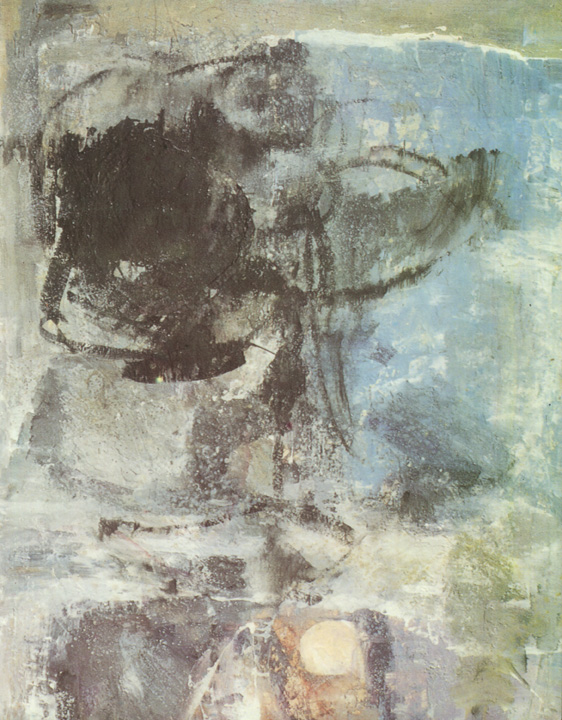
"Mané I" Victor Hugo Marreiros Acrylics; 70cm x 96cm
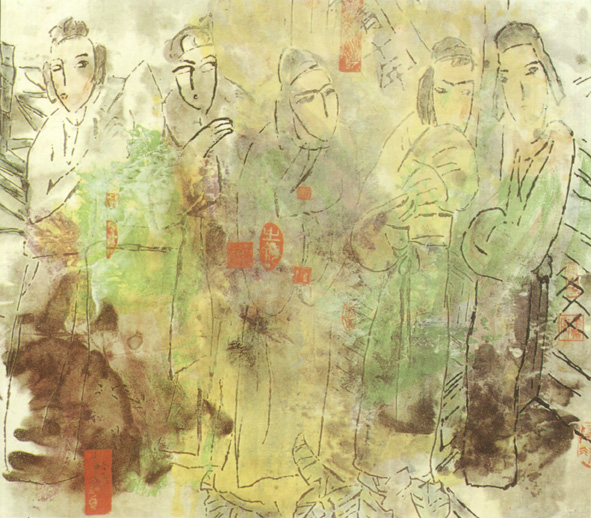
"Love Story" by Um Chi Iam
Chinese painting; 86cm x 86cm
Awarded a prize at the Vth Exhibition of Macau Artists (Leal Senado)
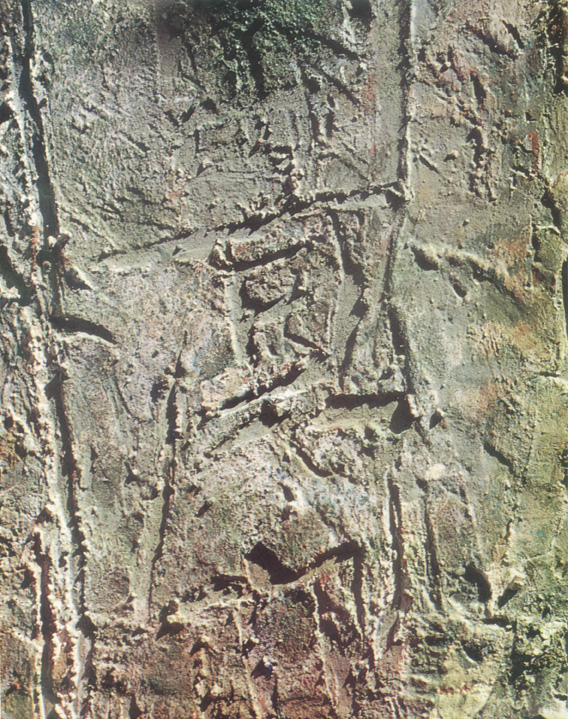
"Stele"
Mio Pang Fei
mixed media; 135cm x 200cm
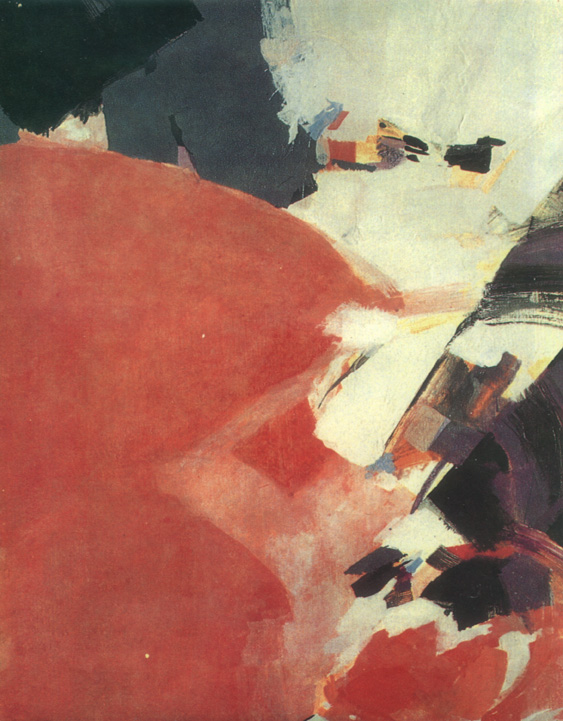
"Circumstances change but the Moon is forever" by Kwok Woon mixed media; 129cm x 192cm
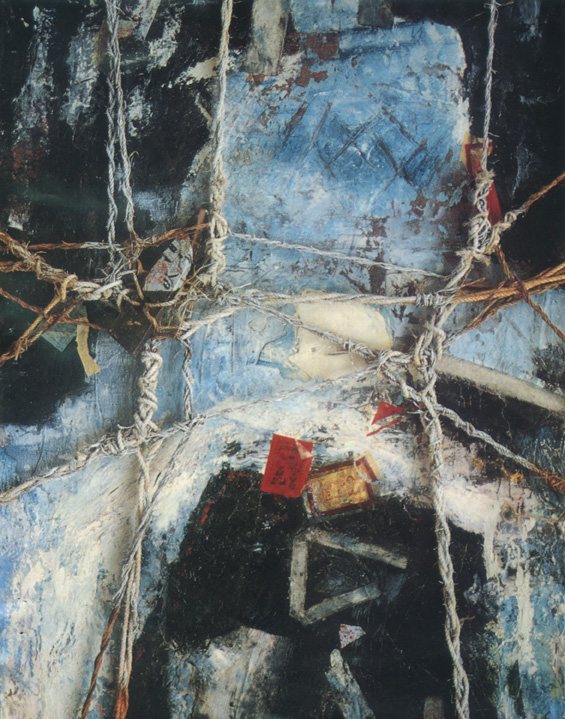
"Rua de Francisco Xavier Pereira, No79"
Ung Vai Meng
Mixed Media; 134cm x 202cm
On the preceding pages
They may concentrate, more or less, on one particular artistic style such as Impressionist Abstraction (Kwok Woon), Expressionism (Guilherme Ung Vai Meng), Minimalism (Carlos Marreiros and Mio Peng Fei) but the results are unfailingly surprising once they have introduced typically Chinese techniques and materials.
At a time when some advocate a return to our origins, or a revival of Primitivism as the solution, it is interesting to note that once again the artistic expression of any epoch either anticipates scientific developments or progresses at the same rate as them. Stéphane Lupasco's systematic approach based on innovations by Eisenstein, Einstein, Von Pauli and Nills Bohr was born in the 1930's to question Aristotelean logic and to propose a new logic. We are seeing a renewed interest in the return to a state in which painting is more relaxed because its aims are not of a higher nature than that of philosophy.
The trends and styles within modern art are influenced by doxa (glory, opinion), kinesis (movement) and rheos (flux, current). The Heraclitan vision is one of everything in a state of flux, but it takes an artist like Carlos Marreiros to put this philosophy onto canvas.
Macau will not see the development of a new, unitarian conception of art, a means simply developed to achieve a certain end. What is interesting to note, however, is that through this style of painting, a European style proto-history is being affected by the ancient traditions of China, a mixing of the cultures which requires further searching and critical reflection. Perhaps Chinese artists are so much at ease because they know they are the guardians of a wisdom containing an essentially derivative view of the world, searching for its origins through constant change and movement. Are the people responsible for these creations aware of the depth of the material on which they base their work?
It is worth looking at the emergence of more "superficial" features in the cultural mélange. When pictograms are employed, they appear as an exercise in abstract calligraphy, a recreation of Chinese characters with a purely pictorial value which are sometimes used to express poetic emotion.
Sometimes the enmeshed creation by Carlos Marreiros or the spontaneous fluidity of Mio Pang Fei include rough, grotesque figures which confront us with the primitivism of both artistic traditions, Western and Chinese. We are presented with the skeletons of insects, fish, the outlines of fossils in the early stages of development (Carlos Marreiros) or characters, figures, funeral inscriptions, man's questioning of his surroundings (Mio Pang Fei). Inscriptions, seemingly carved into rocks, introduce into a modern genre the most distant of primitive experiences. This is the blending of East and West emerging now on Macau's artistic front.
Translated by Marie Imelda MacLeod
start p. 117
end p.